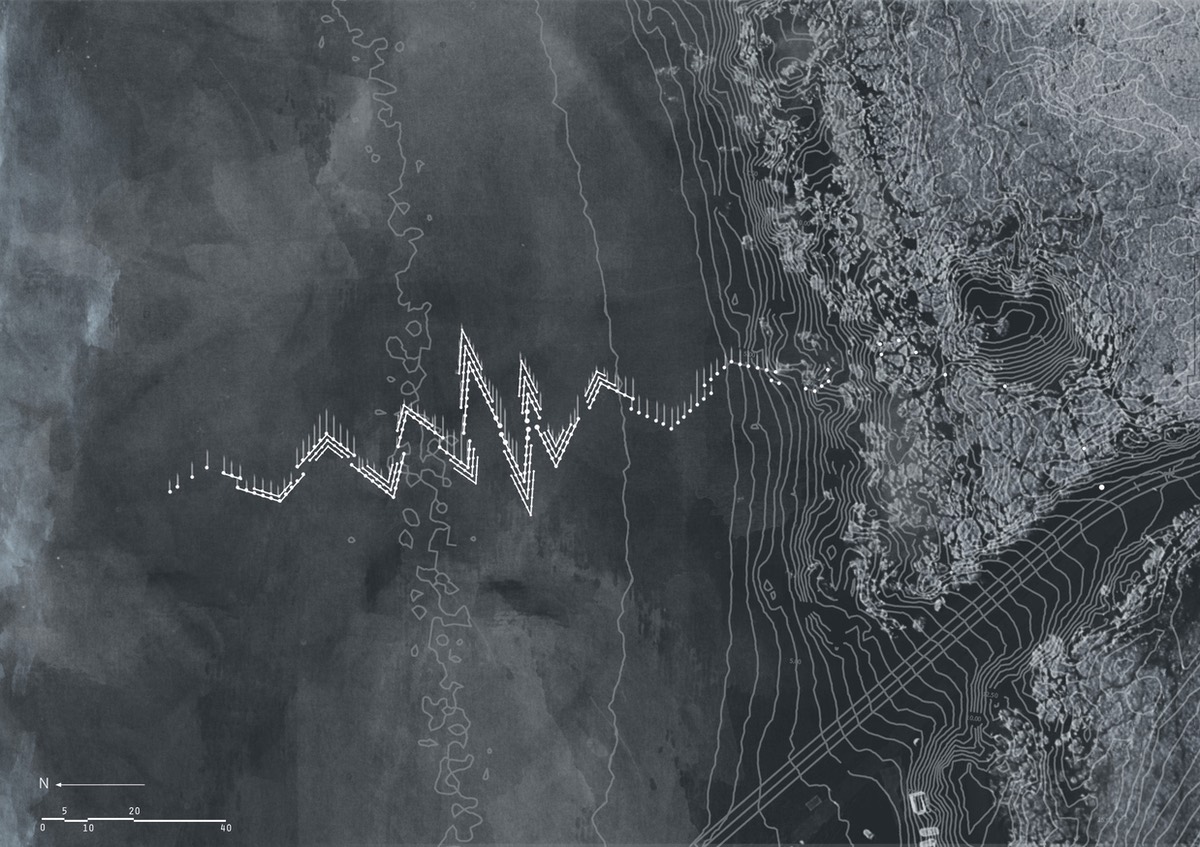On-site experimental installations informing BwN methodology
Downloads
DOI:
https://doi.org/10.47982/rius.7.131Keywords:
Building-with-Nature, landscape architecture, design methodology, hydraulic infrastructures, mapping coastal landscapes, aesthetic experience, co-creationAbstract
The multi-dimensionality of BwN calls for the incorporation of ‘designerly ways of knowing and doing’ from other fields involved in this new trans-disciplinary approach. The transition out of a focus on rational design paradigms towards reflective design paradigms such as those employed in the spatial design disciplines may be a first step in this process. By extension, the knowledge base and design methodologies of BwN may be critically expanded by drawing on ways of knowing and doing in spatial design disciplines such as landscape architecture, which elaborates the agency of the term ‘landscape’ as counterpart to the term ‘nature’. Operative perspectives and related methodologies in this discipline such as perception, anamnesis, multi-scalar thinking, and process design resonate with specific themes in the BwN approach such as design of/with natural processes, integration of functions or layers in the territory and the connection of engineering works to human-social contexts. A series of installations realised for the Oerol festival on the island of Terschelling between 2011 and 2018 serve as case studies to elaborate potential transfers and thematic elaborations towards BwN. In these projects inter-disciplinary teams of students, researchers and lecturers developed temporary landscape installations in a coastal landscape setting. Themes emerging from these project include ‘mapping coastal landscapes as complex natures’, ‘mapping as design-generative device’, ‘crowd-mapping’, ‘people-place relationships’, ‘co-creation’, ‘narrating coastal landscapes’, ‘public interaction’ and ‘aesthetic experience’. Specific aspects of these themes relevant to the knowledge base and methodologies of BwN, include integration of sites and their contexts through descriptive and projective mappings, understanding the various spatial and temporal scales of a territory as complex natures, and the integration of collective narratives and aesthetic experiences of coastal infrastructures in the design process, via reflective dialogues.
How to Cite
Published
Issue
Section
References
Corner, J. (1999a). Eidetic Operations and New Landscapes. In: J. Corner (Ed.), Recovering Landscape: Essays in Contemporary Landscape Architecture (pp. 153-170). Princeton Architectural Press.
Corner, J. (1999b). The Agency of Mapping: Speculation, Critique and Invention. In D. Cosgrove (Ed.), Mappings (pp. 213-252). Reaktion Books.
Dorst, K., & Dijkhuis, J. (1995). Comparing paradigms for describing design activity. Design Studies, 16(2), 261–274. https://doi.org/10.1016/0142-694x(94)00012-3
Girot, C. (2016). The course of landscape architecture: A history of our designs on the natural world, from prehistory to the present. Thames & Hudson.
Jauslin, D. T., & Bobbink, I. (2012). Landscape mirror & feed the wind: Teaching landscape architecture on site at oerol festival in the Wadden Sea. In s.n. (Ed.), Landscapes in transition; 49th IFLA world congress Cape Town South Africa 2012 (pp. 1-12). s.n..
Meyer, E. K. (2008). Sustaining beauty. The performance of appearance. Journal of Landscape Architecture, 3(1), 6–23. https://doi.org/10.1080/18626033.2008.9723392
Marot, S. (1999). The Reclaiming of Sites. In J. Corner (Ed.), Recovering Landscape: Essays in Contemporary Landscape Architecture (pp. 45-57). Princeton Architectural Press.
Prominski, M. (2004). Landschaft Entwerfen: Zur Theorie aktueller Landschaftsarchitektur. Reimer.
Piccinini, D., & van der Velde, R. (2017). IOPM 2017 - PIN(K) A PLACE: Result Elective - Landscape Architecture ON site, being part of Oerol 2017. Delft University of Technology.
Pouderoijen, M. & Piccinini, D. (2013). Institute of place making: A project by the chair of Landscape Architecture at the TU Delft. Oerol 2013: Sense of place. Delft University of Technology.
Schon, D. (1983). The reflective practitioner: How professionals think in action. Basic Books.
Van der Velde, R. (2018). Transformation in Composition: Ecdysis of Landscape Architecture through the Brownfield Park Project 1975-2015 (Doctoral dissertation). Delft University of Technology.
Van der Velde, R. & Van Bergen, J. (2018). Gap the Border: Landscape Architecture on Site, Oerol 2018. Delft University of Technology.
de Vriend, H. J., van Koningsveld, M., Aarninkhof, S. G. J., de Vries, M., & Baptist, M. J. (2015). Sustainable hydraulic engineering through building with nature. Journal of hydro-environment research, 9(2), 159-171. https://doi.org/10.1016/j.jher.2014.06.004
Williams, R. (1980). Problems in Materialism and Culture: Selected Essays. Verso.





